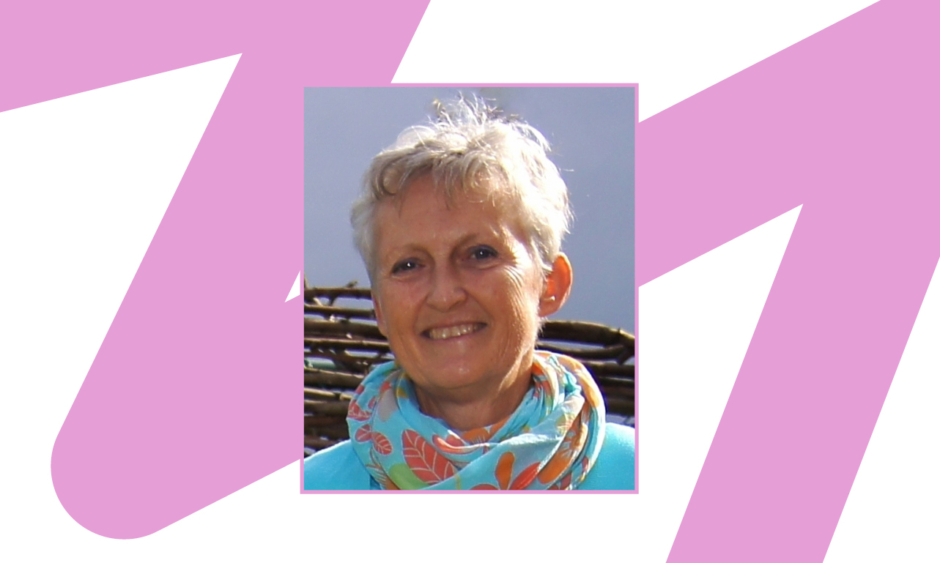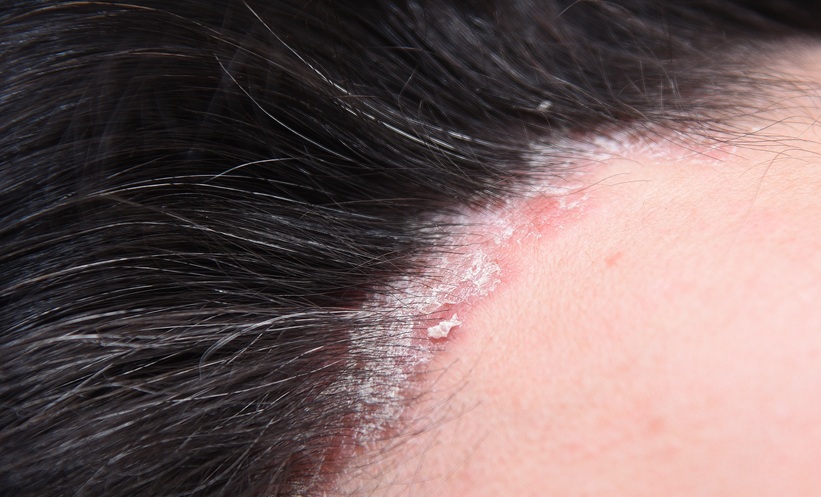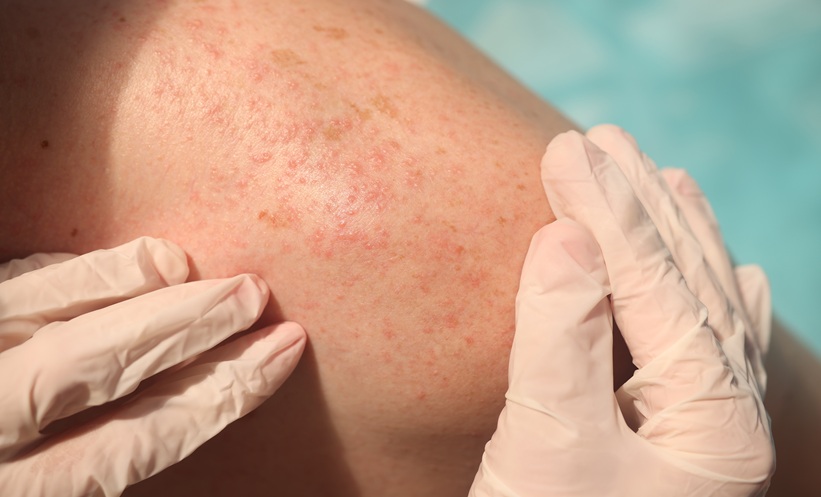Christa De Cuyper | Chair of the European Academy of Dermatology and Venereology (EADV) Nurse Association Working Group (NAWG) and Task Force Facilitator (TFF); Former Head of Dermatology, Sint-Jan General Hospital, Bruges, Belgium
Citation: EMJ Dermatol. 2022;10[1]:53-57. DOI/10.33590/emjdermatol/10060529. https://doi.org/10.33590/emjdermatol/10060529.
![]()
EMJ spoke to Christa De Cuyper about her roles within the European Academy of Dermatology and Venereology (EADV), including the recent Nurses in Dermatology Practice event, which De Cuyper co-chaired.
What does your role as Chair of the European Academy of Dermatology and Venereology (EADV) Nurse Association Working Group (NAWG) entail, and what have been your greatest achievements to date in this position?
In 2016, I was invited by the Executive Committee of EADV to start and chair a NAWG. We had several challenges to tackle: to increase the presence of nurses in the EADV; to develop a solid network with nurses and nurse organisations; to improve the knowledge and insights into the roles and responsibilities of nurses in the management of patients with skin diseases, and to identify their needs, shortcomings, and gaps in training; and, last but not least, to promote education in dermato-venereology.
In collaboration with the Statutes Committee, a new EADV member category for nurses and medical assistants has been created; it was approved by the EADV board in 2020. We started with 21 nurse members in 2021, increasing to 46 in September 2022. More than 80 nurses attended the Congress in Milan, Italy, and many registered for online participation. We have a growing network, excellent contacts with the British Dermatology Nurse Group (BDNG), and have already gathered a core group of motived nurses from different European regions in the brand new Nurse Task Force, which was approved at the board meeting in Milan, and which will continue the work of the working group.
Could you tell us about your primary duties as facilitator of the EADV Task Forces?
The Task Force Facilitator (TFF) is the liaison between the different task forces (TFs) and EADV management. TFs are expert groups on a specific field or topic of dermatology. We currently have 37 TFs in EADV co-ordinated by the TF office and the TFF. The TFF supports with organisational and structural advice, facilitates communication with the Executive Committee and Board, and enhances collaboration between TFs. The TFF can attend TF meetings, virtually or in-person during the congress, and is expected to encourage initiatives and enhance the productivity of the TFs. Since I started in November 2019, I have included five new TFs, guiding them through the application process. The TF bylaws have been updated, implementing the suggestions we collected from a TF survey, which was done in 2020.
TFs have been invited to prepare information and recommendations for the ‘Covid Corner’ on the EADV website. New patient leaflets have been prepared and released, and several TFs have published in the EADV newsletter. My idea to rejuvenate TFs by stimulating mentorship and inviting junior members (dermatologists in training) to join the TFs received positive response. In general, my conclusion is that with my help TFs got a boost, and despite the COVID-19 pandemic, they increased their activities and productivity.
In addition to the NAWG, you serve on the Patient Association Working Group and the Advocacy Working Group. How do you contribute to the operation of these committees?
In both working groups, I try to contribute with critical advice from my personal experience as a clinical dermatologist. I have been working for 35 years in a general hospital, which has given me the opportunity to be in daily contact with patients and with a wide range of other specialties, but also to get involved in clinical studies and gain a lot of practical knowledge regarding innovative therapies and techniques. My department had an excellent relationship with oncology, nephrology, haematology, and rheumatology; has consulted in the diabetic foot clinic; and was partner in the multidisciplinary approach of patients with complex diseases. My job also included teaching and training young dermatologists. All this allows me to give feedback on different aspects of dermatology. I acted as liaison with my national Member of the European Parliament (MEP) to support the initiatives proposed by EADV for the European Beating Cancer Plan.
One of the EADV’s goals is to “build and support a strong nurse community via well-structured training.” To date, what actions has the organisation undertaken to facilitate this? Going forward, how can the EADV continue to provide education for nurses and medical assistants in the dermato-venereology community?
Since 2012, there has been a nurse session during the congress. It became a ‘Nurse Day’ in 2019, and we will continue to have a full day with nurse-dedicated sessions at the future EADV congresses, with a balanced faculty of nurses and doctors.
In 2021, we organised a first fostering course for nurses in dermatology. This was an excellent opportunity to bring nurses from different countries together and exchange knowledge and vision. Many of them joined us for a first roundtable for nurses in dermatology during the recent congress in Milan, and shared their ideas for new educational activities and the further development of a common training framework for dermatology specialist nurses. This interactive meeting was a positive experience to be repeated in the future.
More courses for nurses have been planned on their request, on specific subjects. On 28th–30th November 2022, we will have a course on allergy in Porto, Portugal, and in November 2023 another nurse course, ‘All about Cancer’, will take place in Brussels, Belgium. We intend to prepare webinars and online teaching in co-operation with the EADV school.
You were the Co-Chair for EADV’s Nurses in Dermatology Practice event, which took place between 25th–27th November 2021. In your opinion, what were the standout sessions and key take-home messages from this course?
The course received a very high global score from the participants. The presentations were very interactive, featuring different educational programmes for nurses, implementation of European guidelines in daily practice, and also addressing the diversity of competences and tasks of nurses, in particular illustrating the valuable psychological support and coaching role for patients with chronic skin diseases.
We feared the language barrier, but it was not an obstacle. Lots of participants contributed with presentations, highlighting some aspects of their clinical practice. This proved to be a perfect way to exchange experiences, resulting in animated discussions.
One participant commented: “Many of us spoke different languages. However, we all had something in common; eager to learn and to share our knowledge. We had the opportunity to introduce ourselves, to present case studies or approaches that we considered innovative. In a very short time, the language barrier was broken, and we started to envisage a European Nurse co-operation.”
At the 2021 Nurses in Dermatology Practice meeting, you delivered presentations on photodynamic therapy and skin surgery. What were the most important learnings from these talks?
Patient selection was the starting point. The message I tried to transfer was that informed decision making should be considered for all types of procedures. Guidelines and recommendations are excellent tools to ensure quality of care and to help us with a structured overview of treatment modalities for different indications. However, they should not be mandatory and should allow deviation, taking the specific situation and wishes of the patient into consideration.
Correct diagnosis is crucial. When in doubt, refrain from invasive actions. Do not be ashamed to ask for a second opinion. Good knowledge of procedures, devices, and materials is important and, most of all, know your own limits.
Could you highlight the principal findings from your 2020 review, ‘The role of the nurse in the care and management of patients with atopic dermatitis’?
Higher nursing education is associated with improved patient outcome and safety. The outcome of the treatment of atopic dermatitis is highly related to the patient compliance. Nurses can play a central role in therapeutic patient education and follow-up.
You are a founding member of the European Society of Tattoo and Pigment Research (ESTP), which aims to “advance the manufacturing, distribution and sales of safer tattoo ink and to develop and support research projects, guidelines and publications.” How close are you to achieving this goal, and what further efforts are necessary?
There has been some progress, and the issue has been taken seriously on the European level in recent years. Unfortunately, the decisions taken by the European Chemical Agency (ECHA) do not assure complete safety. The new regulations do not cover all tattoo ink ingredients, and some ingredients with minor risks have been banned, which puts manufacturers in a difficult position. It remains a complex domain, and expert opinion is often not taken into consideration by the decision makers. ESTP is continuing its efforts, and will discuss the issue and current situation at the next congress on 24th–26th May 2023 in Vienna, Austria.
What initiatives and projects are you involved with to promote hygiene standards for tattooists and the safety of tattoos? How active are the EADV in this field?
EADV launched its first tattoo campaign in 2015, and has continued its efforts with the production of two cartoon videos on the website. The aim was to inform the public about the risks of tattooing and tattoo removal. I was a member of the CEN 435 project. The final document, ‘Tattooing – safe and hygienic practice’, was released in 2020, and is a guideline for body art practitioners. It is an international standard on safety and hygienic practices on tattooing to ensure the safety and protection of users. At the EADV congress in Paris, France, an interactive meeting with tattooists took place, where we discussed several aspects of this document.
Since 2020, the new TF Body Art has prepared several patient leaflets regarding complications and aftercare. Several members of the TF are giving teaching sessions for tattooists in their respective countries. We are considering organising a meeting with tattooists at the next EADV congress in Berlin, Germany, in 2023, with the aim to enhance the communication, exchange knowledge, and share experiences. Dialogue is important, and the skin is our common topic.








